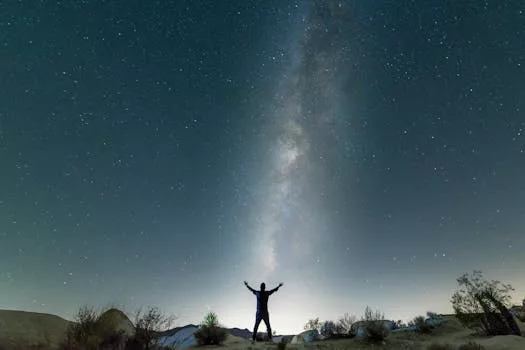
“
Introduction to the Cosmic Journey
From Stardust to Dreams: Imagining Life Beyond the Stars, our focus keyword, propels us into an adventure of discovery, exploring the universe’s vast expanse in search of life, understanding the formation of stars, and delving into the mysteries of the cosmos. The universe has always been a source of fascination for humanity, with its billions of galaxies, stars, and planets. The question of whether we are alone in the universe has sparked imagination and driven scientific inquiry. In this article, we will delve into the wonders of space, exploring the formation of stars, the possibility of life on other planets, and the dreams that drive us to continue exploring the unknown.
The Formation of Stars and Planets
Stars are born from giant molecular clouds, regions of space where gas and dust accumulate. Over time, these clouds collapse under their own gravity, spinning faster and faster until they become so hot that nuclear fusion ignites, marking the birth of a new star. This process also leads to the formation of planets, as material left over from the star’s formation cools and condenses into solid bodies orbiting the star. Understanding the formation of stars and planets is crucial for identifying potential homes for life beyond Earth. For a deeper exploration of this topic, check out Charting New Realms: The Journey of Imagination Beyond the Stars.
Exoplanets and the Search for Life
The discovery of exoplanets, planets that orbit stars other than the Sun, has been one of the most exciting developments in astronomy in recent decades. With thousands of exoplanets identified so far, the possibility of finding life beyond Earth seems more plausible than ever. Scientists use various methods to detect exoplanets, including the transit method, which involves measuring the decrease in brightness of a star as a planet passes in front of it, and the radial velocity method, which detects the star’s slight wobble caused by the gravitational pull of an orbiting planet. The search for life on these exoplanets involves looking for biosignatures, signs of biological activity, such as the presence of oxygen or methane in a planet’s atmosphere. For more on the imaginative aspects of this search, read The Infinite Universe of Imagination: Beyond Celestial Boundaries.
Stellar Life and Cosmic Dreams
As we explore the universe, we are not just searching for life; we are also driven by our dreams and imagination. The possibility of finding life beyond Earth inspires us to continue exploring, to push the boundaries of what we thought was possible. Stellar life, or the potential for life to exist on stars or in interstellar space, is a concept that challenges our current understanding of biology and astrophysics. Whether or not we find life elsewhere, the journey itself is what makes us human, driving us to innovate, to discover, and to dream. This theme resonates deeply in Soaring Through the Cosmos: The Power of Imagination Beyond the Stars.
Conclusion and Takeaways
In conclusion, our journey from stardust to dreams has taken us through the formation of stars and planets, the search for exoplanets, and the possibility of life beyond Earth. The key takeaways from this cosmic adventure include:
- The Formation of Stars and Planets: Understanding how stars and planets form is essential for identifying potential homes for life.
- Exoplanets and Biosignatures: The search for exoplanets and biosignatures is an active area of research, with scientists using a variety of methods to detect and study these distant worlds.
- Stellar Life and Imagination: The possibility of life beyond Earth inspires us to continue exploring and to dream of what might be possible.
As we look up at the night sky, we are reminded of the infinite possibilities that lie beyond our planet. From stardust to dreams, our journey through the universe is a testament to human curiosity and the boundless potential of the cosmos.




